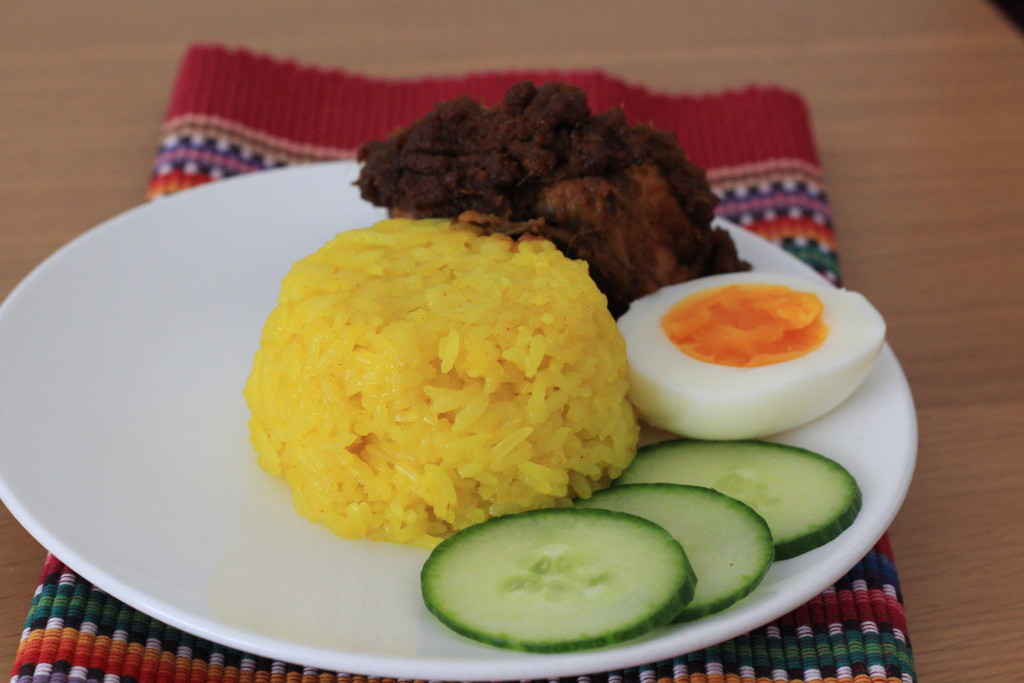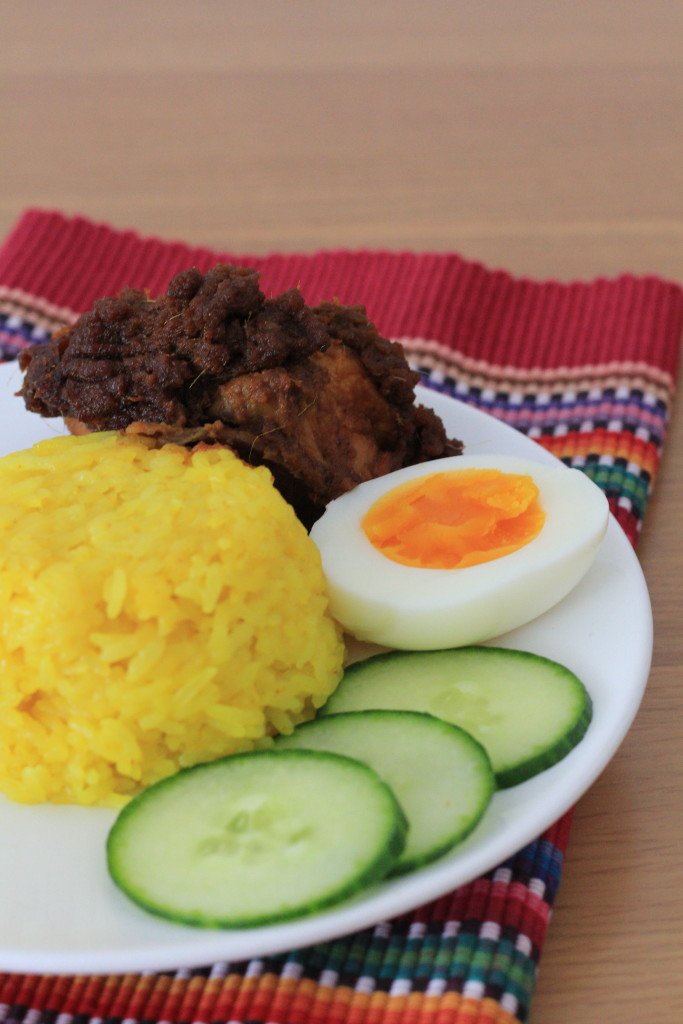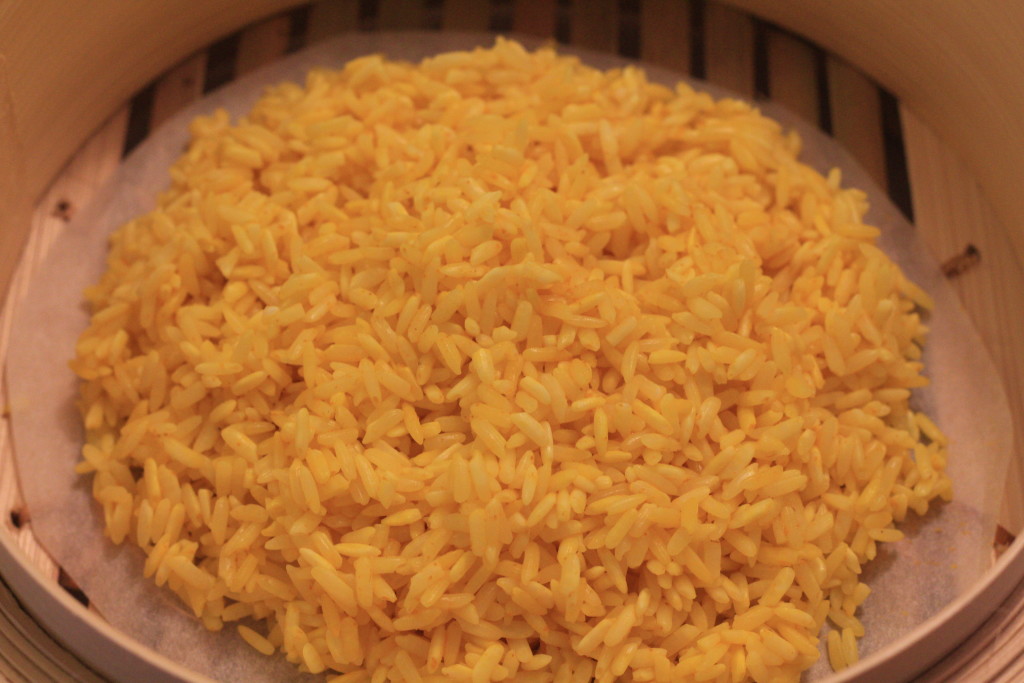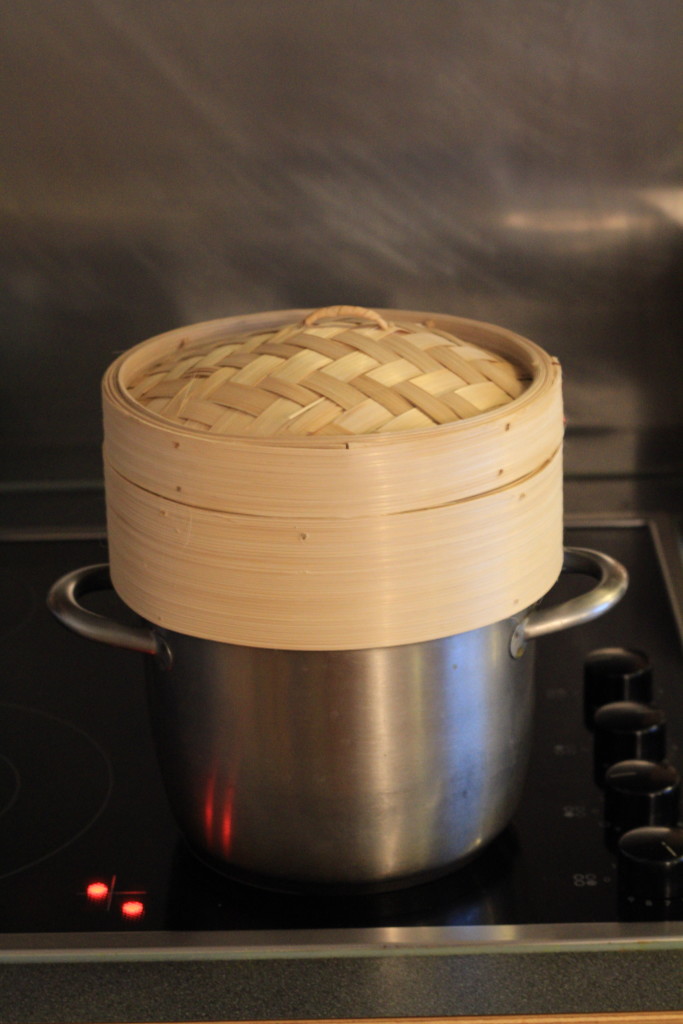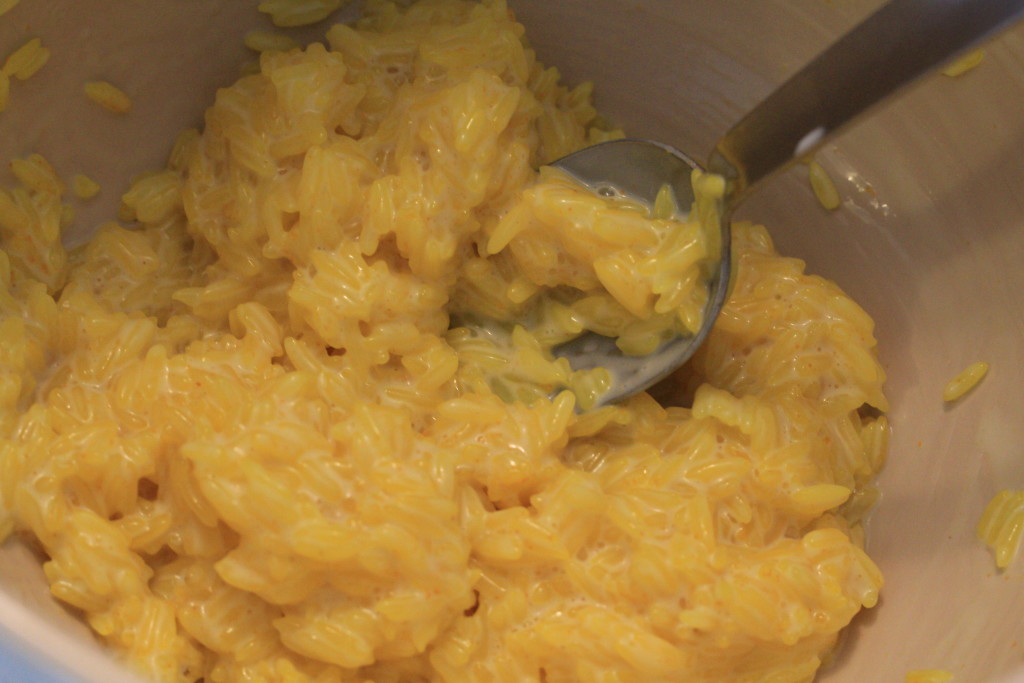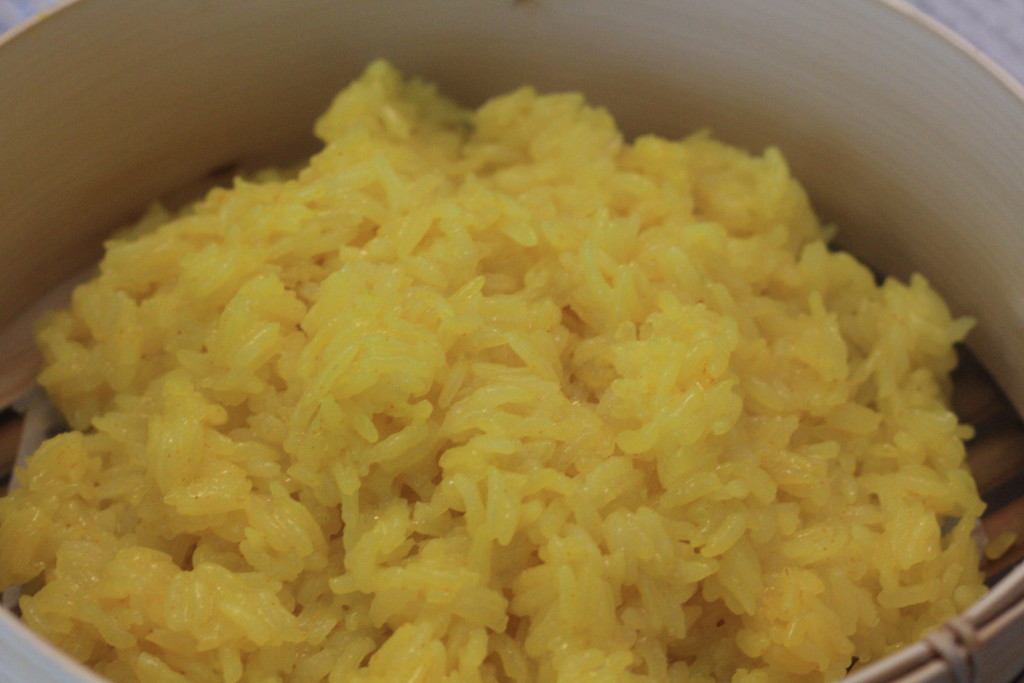I don’t quite know what pulut kuning is in English. The direct translation would be “yellow sticky/glutinous rice” – is that the right term to use? I have no idea, so let’s just stick with pulut kuning, shall we?
If you’re wondering what pulut kuning is, it is as per my English translation above – yellow sticky rice. The yellow comes from soaking the rice grains in water mixed with turmeric as the coloring agent to give it the yellow makeover. In Malay culture, pulut kuning is often served during ceremonial events or on special occasions: Eid, engagements, weddings and thanksgiving, to name a few.
To be perfectly honest, I am not such a big fan of pulut kuning. It’s delicious and I do enjoy eating pulut kuning once in a while, but that’s it. If my memory serves me right, the one and only time when I have ever cooked pulut kuning myself was way back when I was still in boarding school – for one of my home science lessons. That was donkey years ago!
Now, don’t ask me why I have a pack of sticky rice in my pantry – I just do. I still have a tiny bit of the chicken rendang – leftovers from our Eid dinner the other day. I thought that pulut kuning would simply be the perfect pairing to go with the rendang. It’s really not that hard to make so here’s my second go at making pulut kuning.
There are several ways to make pulut kuning but this time, I am cooking the sticky rice using the steaming method, so a steamer is needed. For me, this is the foolproof method to cooking sticky rice.
I am cooking for one, so I’m not going to make much but since I am taking out my steamer, I might as well make enough for two servings to make it worthwhile. You can increase the quantity as desired.
You’ll need:
- 1 cup white sticky or glutinous rice (you cannot substitute this with normal long grain/basmati rice)
- 1 tamarind peel, optional
- 1 tsp turmeric powder
- 1/2 cup thick coconut milk
- 1/2 tsp salt
- 1 pandan leaf
- water
In a large bowl or pot, wash the rice grains with cold water several times to remove the extra starch (at least three times). The water from the first wash would be cloudy and would gradually become clearer with the subsequent washes.
Add the tamarind peel. A tip that I was given once upon a time is that the tamarind peel will help give a shiny appearance to the end product – true or not? Maybe. Add also the turmeric powder and pour in cold water to fully submerge the sticky rice. Leave for at least two to three hours. I left it overnight.
In the morning, drain the water and take out the tamarind peel. Be gentle in handling the rice grains. After they had been soaked in water for hours, at this point they are rather brittle. Prepare the steamer. The traditional way is to line the steamer with banana leaf. You can also use muslin cloth. I don’t have either one so I am using grease paper instead which works just as well. Place the sticky rice in the centre of the steaming rack.
Cover and steam for 10 to 15 minutes.
While the sticky rice is being steamed, dissolve the salt in the coconut milk. After 10 to 15 minutes, take the rice off the steamer and transfer to a large bowl.
Pour the coconut milk over the steamed rice.
Mix it evenly making sure there are no lumps to allow the coconut milk to absorb evenly into each grain.
When done, transfer the sticky rice back to the steamer rack – I put a piece of pandan leaf at the bottom for extra fragrance. It’s totally optional. Steam the rice for another 10 to 15 minutes.
Done and ready to be served. See, it’s not that difficult isn’t it? xo
